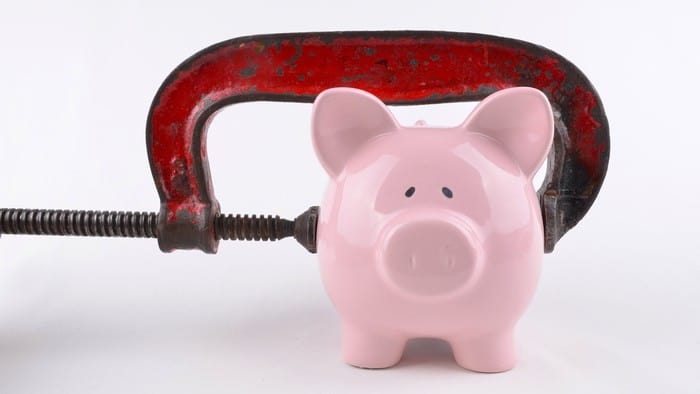This article was originally published on Fool.com. All figures quoted in US dollars unless otherwise stated.
In investing, a "squeeze" typically refers to times when rapid price movements in a company's stock force investors to make changes in their investment positions that they otherwise wouldn't. Those forced moves often drive even more price changes and forced moves, creating a nasty feedback loop that can last quite awhile before it crashes.
One of the more common types of squeezes is known as a short squeeze -- when a rising stock price forces people who had sold the stock short to buy back those shares, driving stock prices higher. Related to the short squeeze is something known as a gamma squeeze.
A gamma squeeze takes things one step further, forcing additional stock-buying activity due to open options positions on the underlying stock. A gamma squeeze is behind a large part of the recent meteoric rise in the share price of GameStop Corp (NYSE: GME).
Why options trading can create stock volatility
Options are traded a little bit differently than stocks are. When you open an options contract, chances are that you are not trading with another individual investor, but rather with a market maker. You and your counterparty (typically the market maker) are likely creating the options contract -- both the assets and the liabilities they entail -- out of thin air, within the structure of standardized contracts.
Market makers aren't entering into these transactions out of the goodness of their hearts, but rather to make a profit from the trade. The market maker typically uses a sophisticated pricing model known as the Black-Scholes options pricing model to figure out what the option should cost.
The price at which the market maker will actually trade with you generally figures in a bit of a statistical profit based on that pricing model. On top of that, the market maker will likely use a little bit of that potential profit, along with other capital, to hedge his or her bets by buying or shorting stock, depending on the option in question, in case the market moves the wrong way from that market maker's perspective. It's that hedging activity that can create the conditions that make a gamma squeeze possible.
It's all Greeks to me
The Black-Scholes model doesn't just spit out a price for an options contract. It also enables the calculation of a number of risk measures based on that price that are collectively known as the Greeks. One of those Greeks -- known as gamma -- is often used by market makers to figure out how much to hedge their bets.
The higher the gamma, the larger a stock position the market maker will need in order to have an effective hedge against open options positions. As a result, as gamma changes, market makers with open options positions are often forced to buy or sell the underlying stock to keep their own books properly hedged. Large amounts of that forced buying or selling activity is what creates a gamma squeeze.
Where does gamma come from?
To understand gamma, you first have to get a handle on an option's delta (another Greek), which represents the expected change in the price of an option based on changes in the price of the underlying stock. For instance, if a call option has a delta of 0.2, its price is expected to rise about $0.20 for a $1 rise in the underlying stock. An option's delta will change based on how far away the stock price is from the exercise price of the option, and in which direction.
The chart below shows a sample graph of what an options delta chart would look like for a long call option on a stock. A long call option gives its holder the right to buy 100 shares of stock at a given price, while the seller of the option will hold the reciprocal obligation to sell those shares at the exercise price. Looking to the chart, option delta is a nearly flat line around zero when a stock's price is well below the option's exercise price. It is also a nearly flat line around 1 when that stock's price is well above the option's exercise price.

Chart by Author.
In the middle, though, that delta chart curves upward, reaching a value of 0.5 and reaching its steepest slope at exactly the option's strike price. It's the slope of the option's delta chart that represents the option's gamma, and that slope -- and thus the gamma -- is at its steepest at exactly that option's exercise price.
What can create the conditions for a gamma squeeze to occur?
In GameStop's case, many people have long expected the company to be forced to declare bankruptcy, thanks to a business model that has been largely disrupted by digital downloads of games. When they expect such bad news, investors may be tempted to borrow and short the stock. So many people had made that decision regarding GameStop that more than 100% of the company's total float had been sold short at one point.
Because of the potential for a short squeeze, many investors who short stocks don't simply sell a stock, but rather they cover their shorts by buying long, offsetting, out-of-the-money calls (i.e. exercise price of the call is above the price shares trade at when the calls were purchased). Say an investor shorted 100 shares of GameStop at $10 per share back in October 2020. That investor could have bought a $15 call option to cover that bet for a fairly cheap price back then.
That would have protected the investor from a short squeeze causing a spike in GameStop's price, at the cost of some of the potential profits if the company's shares did continue falling toward zero. The market maker on the other side of that options trade would have probably used a gamma calculation to determine how many shares of GameStop to buy in order to set up a hedge.
Fast forward to January 2021, the GameStop short squeeze is in full swing. GameStop's challenging fundamentals haven't dramatically improved, but the stock price is much higher thanks to the short squeeze. That higher stock price attracts even more short-sellers, who want to profit from the even deeper distance GameStop's shares may fall.
Those new short-sellers in turn buy more out-of-the-money long call options to protect themselves from the possibility that its shares will rise further. On top of that pressure, speculators who are betting the stock will continue its meteoric rise may also be buying out-of-the-money call options in the hope their bet pays off. Especially if there isn’t much time value left on those call options because they’re close to expiring, the risk/reward trade-off can look mighty tempting.
That forces the market maker on the opposite side of that options trade to buy more shares to hedge, which in turn causes the stock to rise more. As the stock rises to approach that option strike price, the market maker is forced to buy even more shares as a gamma hedge, and thus you wind up with a gamma squeeze.
What goes up, will very likely come down
The key thing to note about gamma squeezes, though, is that they are often very sharp, double-edged swords. Just as they can force buying pressure, they can also force selling pressure. Recall that gamma is based on the slope of that delta chart above, and that chart has the steepest slope (and thus, the most gamma) at exactly the option's strike price. Get too far away from that price, and gamma starts to fade, reducing (and in fact often reversing) the pressure to hedge.
Likewise, as those options contracts close, are exercised, or expire, the market maker no longer needs to hold a hedge against an options position that no longer exists. That also reduces the buying pressure on the stock, which could cause the squeeze to reverse itself.
No matter what the driver of their eventual reversal, gamma squeezes don't last forever. And when they reverse, the move in the opposite direction can be just as gut-wrenching (if not more so) than the initial squeeze itself was.
Either way, volatility during and immediately after a gamma squeeze is usually extreme, and predictability goes straight out the window. As a result, whether it's with GameStop or any other company going through a gamma squeeze, the best thing to do might just be to wait until it's over. Once it's over, you can look through whatever wreckage remains and determine whether it offers you an investment opportunity you really want to take advantage of for the long term.
This article was originally published on Fool.com. All figures quoted in US dollars unless otherwise stated.









